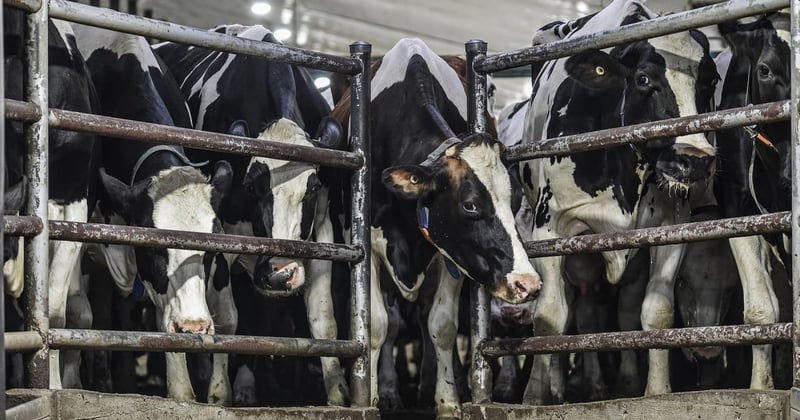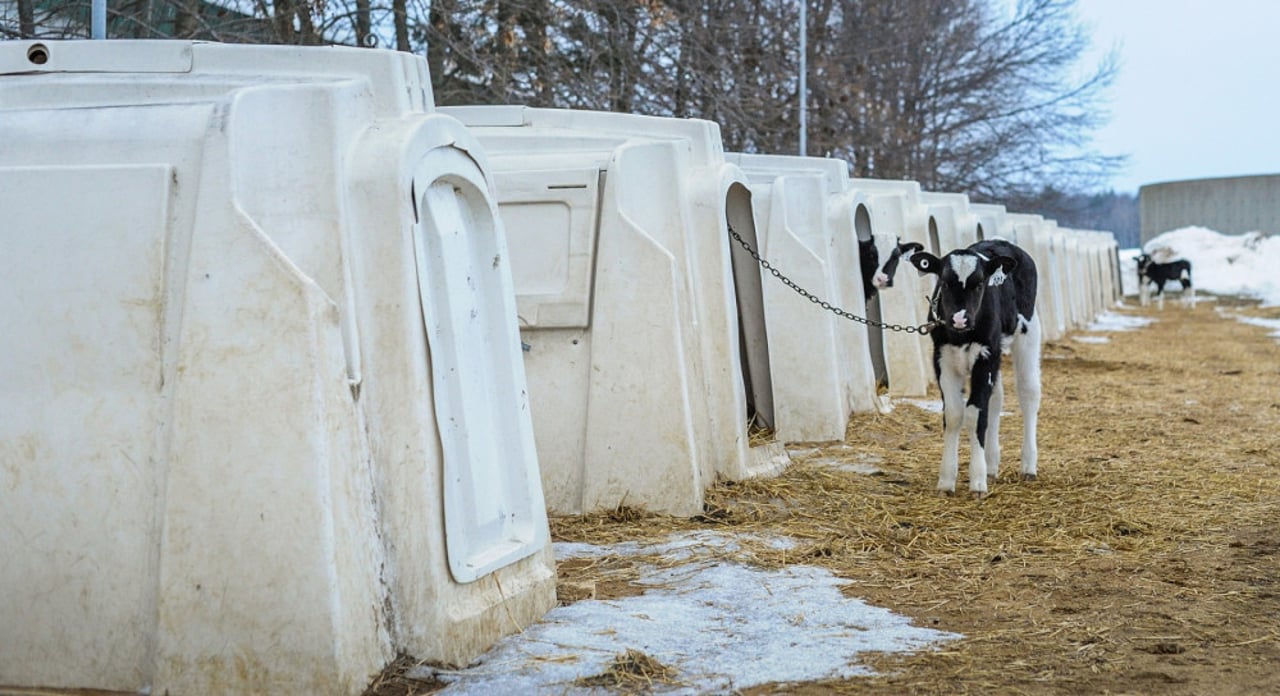
The National Farm Animal Care Council (NFACC) has released an updated Code of Practice for the Care and Handling of Dairy Cattle. While some important improvements have been made, some aspects fall short and fail to protect the welfare of dairy cows and calves.
In March 2023, the National Farm Animal Care Council (NFACC) released the updated Code of Practice for the Care and Handling of Dairy Cattle. The codes of practice set out requirements and recommendations for the care and handling of farm animals in areas such as housing, husbandry, feeding, and handling.
During the public comment period, World Animal Protection and other animal advocacy groups provided feedback on the draft code, urging the code committee to strengthen aspects of the code. The new code includes some important improvements from the 2009 code, but some aspects still fall short to maximize cow and calf welfare.
Here is an overview of some of the updates made to the Code of Practice for Dairy Cows and where the code is currently failing dairy cows’ welfare:
Calf housing
Many farms in Canada keep dairy calves in individual housing. Calves are social animals and housing them in isolation causes the animals’ significant stress. There are also health and psychological benefits to keeping them in groups. As of 2031, the code requires producers to keep calves in pairs or groups. This is a good outcome, though the phase-in date is too long.
A calf chained to a calf hutch throughout the cold winter in Canada. | Photo: Jo-Anne McArthur / We Animals Media
Cow-calf separation
In the dairy industry, calves are separated from the mother soon after birth which is distressing to both the calf and the mother cow. This is by far one of the most contentious issues in dairy production, but it has not been addressed in the new code, likely because the solution is a challenging one that many producers are not ready to tackle.
However, there are farmers that permit calves to stay with the mother cow for bonding and nursing while still collecting milk for human consumption. Five Freedoms Dairy in the U.S. is one such example and the farmer notes that there are both production and animal welfare benefits to the practice. While this may be a unique and uncommon situation, it offers a solution to a practice most consumers find unacceptable.
Cow housing
Dairy cow housing is undoubtable another highly contentious issue. Tie stalls – the practice of tethering cows to their stalls 24/7 – is still common in Canada. The new code fails to make significant improvements in this area by implementing a phase-out of this practice.
The code acknowledges that cows are “naturally motivated to access pasture and graze” and that “regular access to open outdoor areas or bedded packs improves hoof health, reduces the frequency and severity of injuries, and can reduce the occurrence of lameness”. Despite this, the new code does not require that cows be provided with access to the outdoors.
However, the code recommends (but does not require) that cows be provided with 50 hours of outdoor access in a four-week period, weather permitting. And as of April 1, 2027, continuous tethering is prohibited, and cows must be given “sufficient regular opportunity for freedom of movement to promote good welfare”. What this means in practice is yet to be determined.
Fitness for Transport
Cull dairy cows are vulnerable animals that may be experiencing illness or injury when they are removed from the herd and sent to slaughter. As our recent report shows, many animals are inappropriately shipped in a compromised state and not fit for transport. The code has acknowledged this problem and has strengthened the requirements around assessing animals to ensure they are fit for transport. This means ensuring they are strong and healthy enough to withstand the journey and that they are not thin or lame.
The recommendations contained in this section include encouraging producers to consider local slaughter options, mobile slaughter, or on-farm emergency slaughter. It is disappointing that this was not listed as a requirement given the welfare issues associated with the transport and sale of cull dairy cows is well-known.
Enforcement of the code requirements
Canada’s Codes of Practice are largely voluntary and enforcement by law, regulation, or penalty is limited. Six provinces reference the codes in their anti-cruelty legislation, which means they would be enforced only when cruelty or neglect is suspected.
Most commodity groups (such as the Dairy Farmers of Canada) require their members to meet the Code requirements (but not the recommendations) and have programs of varying rigour to ensure they are met.
How you can help
We are actively engaging with stakeholders to encourage positive change for the management of cull dairy cows. Stay tuned for updates and actions you can take to help encourage change within the industry, government, and companies.
Banner photo: Jo-Anne McArthur / We Animals Media
